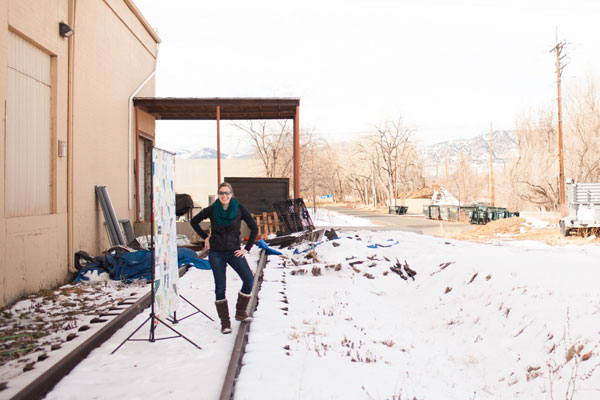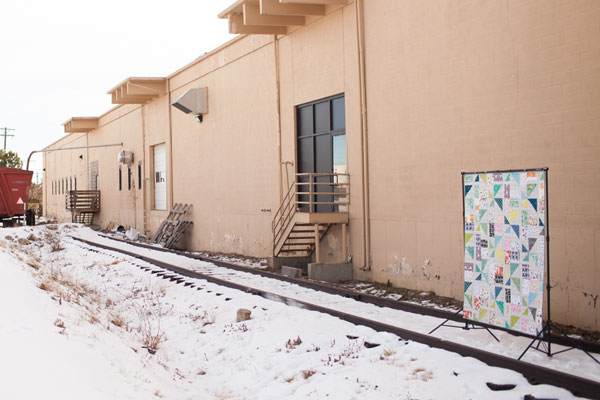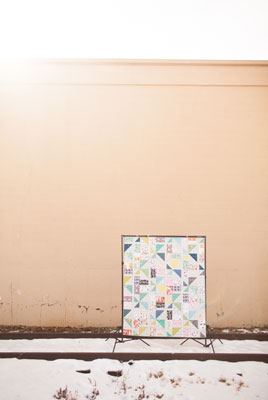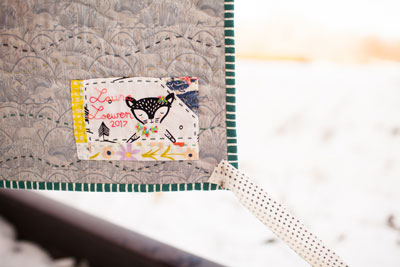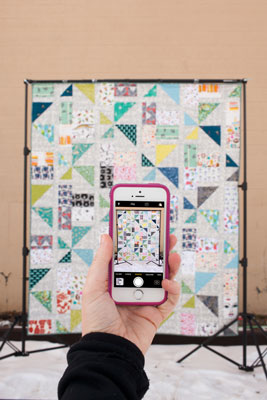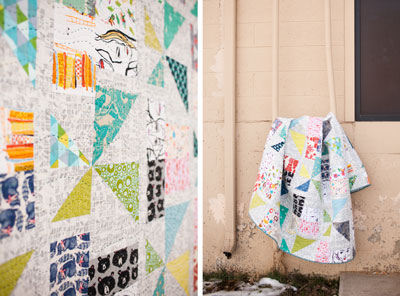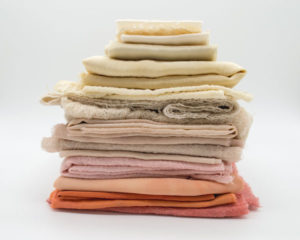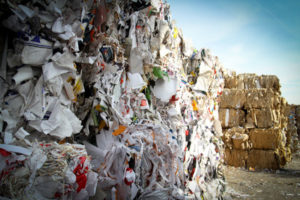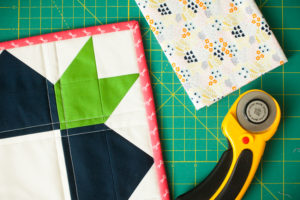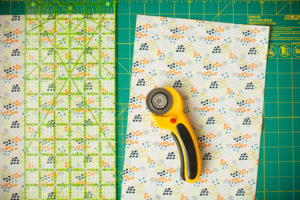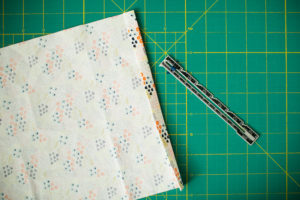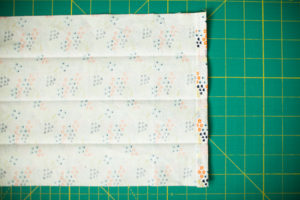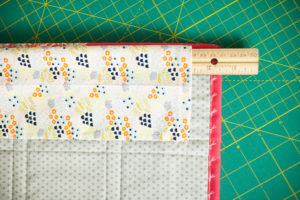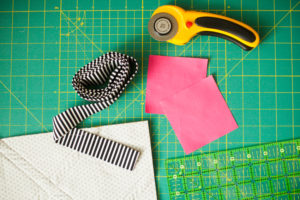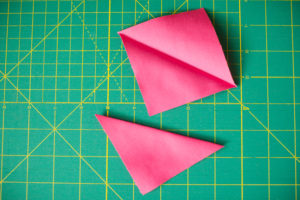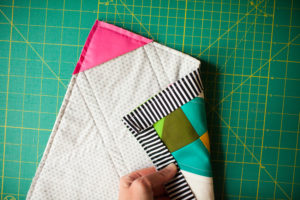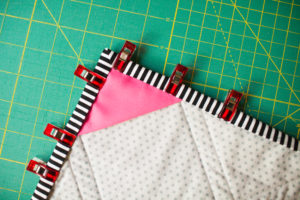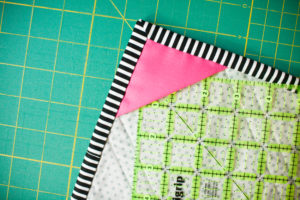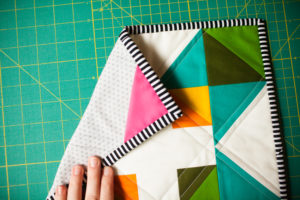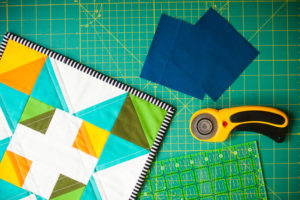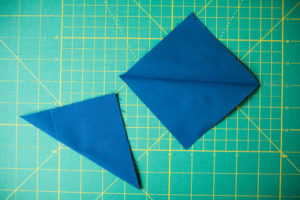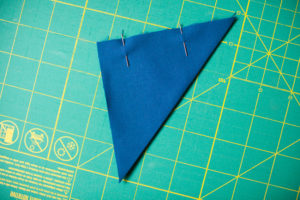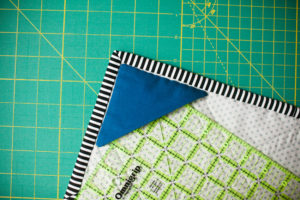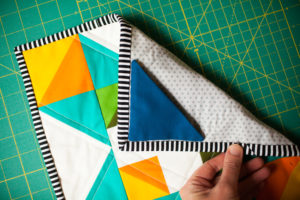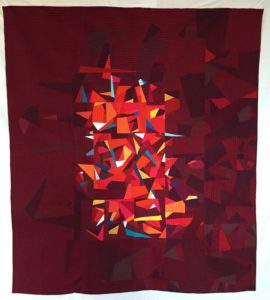An Exploration in Sustainable Modern Quilting BMQG Juror Introductions
We are excited to introduce to you our Boulder Modern Quilt guild volunteer jurors. These women, along with our guest juror Stephanie Ruyle, whom we introduced earlier, will be the jury panel for our show An Exploration in Sustainable Modern Quilting. The show will hang at CU Boulder beginning October 4, 2018. Our jurors come from a diverse background in quilting and sustainable practices.
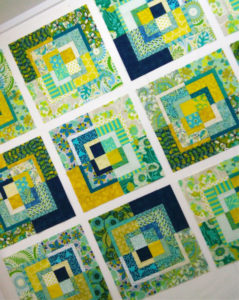
Anne has been taking advantage of the beautiful fabrics in her collection and is currently assembling a stunning quilt.
Anne Deister is a founding member of the BoulderMQG. She has exhibited quilts at QuiltCon, Quilt Festival Houston and Chicago, and the Rocky Mountain Quilt Museum. Her work has also been published in several magazines. As a graphic designer, Anne’s favorite part of the quilting process is in the designing. She creates quilt patterns under the name Springleaf Studios. You can see more of her work by visiting her blog www.springleafstudios.com and on Instagram @springleafstudios
Anne’s thoughts on sustainable quilting;
“Color and the pattern in fabrics is what drew me into quilting nearly 20 years ago and has led to accumulating quite a stash. The idea of sustainable quilting has encouraged me to reevaluate my choices and make better use of what I already have rather than collecting more. On a different note, I have always been interested in family history and legacy. Sustainable quilting provides a means of preserving and honoring the past in a very tangible and relevant way. I look forward to exploring and making more meaningful and thoughtful work while consuming less.”
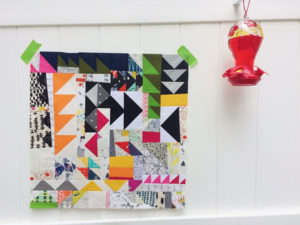
Laura created a mini quilt top using just orphaned block scraps from the construction of blocks for her BoulderMQG block of the month quilt tops; these would have otherwise been thrown away.
Laura Loewen is the current Vice President and Education Committee Chairperson of the Boulder Modern Quilt Guild. She has been quilting off and on for 20+ years, beginning in 4H and most recently becoming more active with the Modern Quilt Guild. Laura has been a member of BoulderMQG for 2 years and was previously a member of the DallasMQG.
What Laura has discovered about sustainable quilting;
“Sustainable quilting can take on many forms for each individual. Some people will realize they enjoy making with repurposed materials, or completing or repairing quilts passed through generations of their family. Sustainable quilting to me means I have become more mindful and intentional with sewing. I have started doing more handwork and hand quilting which keeps me from becoming a quilt generating machine. It lengthens my production time, therefore, slowing my material and energy consumption. And I have consciously decided to embrace my fabric stash and use what I have; only purchasing a select few fabrics as needed. Thinking through what sustainable quilting means to me has refreshed my happiness with this hobby.”
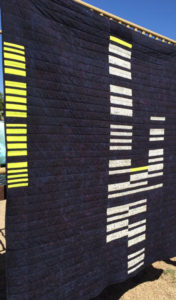
Shelly’s expertise in modern quilting is incorporating repurposed and reclaimed materials into her quilt designs. This is her Morse Code quilt.
Shelly Sommer came to quilting in 2015, when a vision for a big project sprang into her mind and wouldn’t be evicted without getting made. Shelly focuses on large-scale (one-block) quilts, drawing inspiration from print materials and the tactile qualities of fabrics. Because her day job involves working closely with climate and environmental scientists, sustainability has taken on a particular, personal meaning for her. She has been a member of the Boulder MQG for three years.
Sustainable quilting has great importance for Shelly;
“Even though a big part of my day job is about sustainable behavior, I had to learn the basics all over again when I started quilting and sewing. I love using reclaimed fabric and that’s a very visible part of my quilts, but in the end that breaks down to rethinking why I make quilts, my relationship with consuming and stashing, and what it means to honor my materials. For me, modern quilting really resonates with sustainability, since modernism is all about stripping away the unessential and bringing out the true character of what you’re doing.”
Please join us for our opening reception on October 4 at 6pm. An Exploration in Sustainable Modern Quilting is presented by the Boulder Modern Quilt Guild and the Sustainability, Energy and Environment Community, University of Colorado Boulder; sponsored by Albert A. Bartlett Science Communication Center, 4001 Discovery Drive, Boulder, CO.


